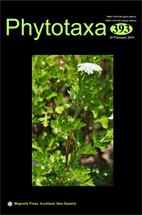Abstract
The genus Synechococcus is widespread across marine environments globally including in coastal habitats. In this study, culture of a new isolate (CMS01) of Synechococcus has been established and described based on polyphasic taxonomy from the world’s largest mangrove ecosystem, Sundarbans. This planktonic photoautrotroph has been proposed as a new species Synechococcus moorigangaii sp. nov. belonging to the order Chroococcales. The cells representing this proposed new species are solitary and can also form chain comprising of 4–6 cells. The shape of cell is oval to cylindrical and length ranges from 1.2–3 µm while the width ranges from 0.8–2 µm. The distribution pattern of photosynthetic filaments was found to be from the periphery of cell. Based on robust phylogeny of 16S rRNA, in addition to functional genes such as psbA, ureC, rbcL, and cbbA (multi gene phylogeny), the proposed new species differed from closest described species of Synechococcus under order Chroococcales. The fatty acid analysis indicated the presence of C12 and C14 chain fatty acids exclusive to isolate CMS01. The new isolate can grow across a range of salinity and in presence of different nitrogen sources. It has the ability to fix atmospheric di-nitrogen into ammonium ion. This new isolate of Synechococcus spp. is the first marine planktonic cyanobacterium described from a mangrove ecosystem and characterized using polyphasic approaches. Based on 16S rRNA phylogeny, this proposed new species clustered with Synechococcus strains PCC 7117, PCC 73109, PCC 7002, PCC 7003, PCC 7376 and NKNG15041c belonging to the order Chroococcales. The new species Synechococcus moorigangaii sp. nov. can serve as a model organism to understand ecophysiology and adaptation of planktonic cyanobacterial communities in mangrove ecosystems.

